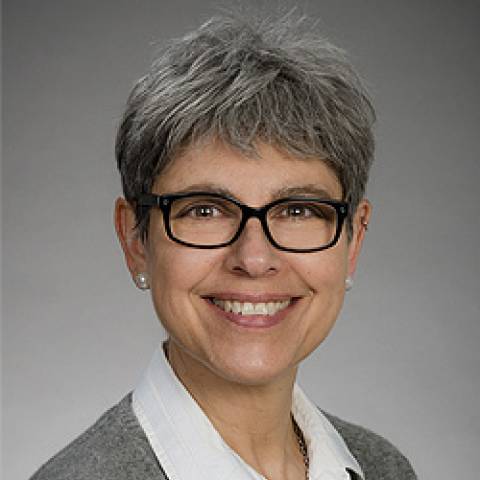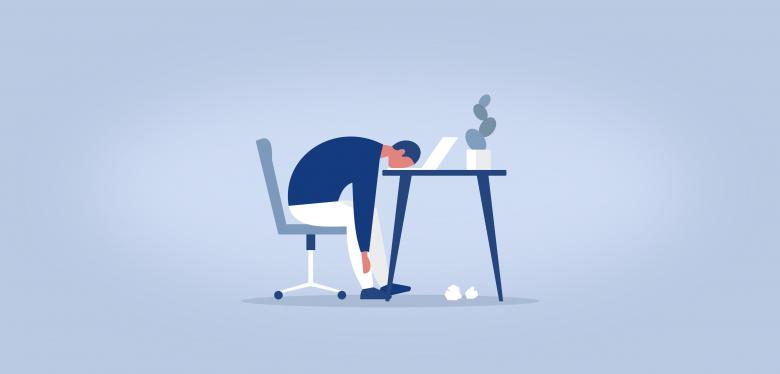

Burnout follows from physician to wellness director
Written by Dr. Claudia Finkelstein for KevinMD. She also wrote a follow-up, "Cognitive dissonance in the medical profession"
Tuesday, at the podium in a small auditorium, I realized that my time was finally up. Even as an educator/administrator (non-clinical) physician, I was done. Preparing to give a canned talk — a requirement of my current career strategy — facing a group of anonymous medical students, the only thought going through my head was, “Why don’t we blow through these slides and get out of here?”
Normally, I relish public speaking and reliably provide an enthusiastic and engaging class. Not Tuesday. I could scarcely muster enthusiasm or caring. I ended up boring not only the students, but myself. Worse yet, I was supremely indifferent to having given a subpar, lackluster talk.
Something had shifted irreversibly. The signs had been there for a while, but the knowledge that “it’s over” came suddenly.
Until we re-examine our priorities as healers, health systems, and a society, there will not be a “cure” for clinician burnout, merely a growing cottage industry of programs treating its symptoms.
Suddenly after more than three decades of physicianhood. Three decades during which I repeatedly tried to outmaneuver the changes in how medicine is practiced. Changes eroding the rewards and love of my profession.
I have now run out of evasive strategies.
Early on, my work’s purpose, meaning, and love were easy to access. The rewards handily outweighed the inevitable stress of the job. The ability to connect deeply, to alleviate suffering in both patients and trainees was more than adequate compensation for the difficulties of the work. I was sure they could tell I cared about them and for them. There was also the attendant credibility and social capital of being a physician.
As in any crumbling relationship, I didn’t notice when the indifference started to crowd out the love and joy. But now, there is no mistaking it.
So, what happened? The etiology is murky and multifactorial. Some nature, some nurture. The political, societal, and economic shifts in the United States provided the environment where the system changes occurred.
My attempts to grow as a person and self-actualize gave me a new perspective. My inability to address social inequities as the root causes of many primary care visits created moral distress and a sense of powerlessness. I felt like I was peddling amlodipine and Prozac to people who needed a living wage and an even playing field.
It became more difficult to believe that I was helping people. Difficult to believe that our medical system is patient-centered.
My perspective helped me notice that “the medical system,” instead of shifting in response to the needs of the patients or the health of the population, has been shifting to better meet the needs of regulators, payors, and administrators. These shifts have not benefited patients, but they have also placed unintended burdens on clinicians to the point that the phrase “pajama time” now routinely appears in medical journals.
Over the decades, I deployed numerous career strategies. Ways to avoid spending ten half days per week cranking out 15-minute perfunctory visits. Visits followed by data entry, inbox management, prior authorizations, and follow-up phone calls. Visits that minimized the interpersonal juice that made caring real. Visits that felt transactional at best. Visits during which “you either screw the patient, or you screw yourself.” I didn’t want to screw the patients but could only screw myself to the tune of five or so half days per week.
As time passed, so did the effectiveness of my strategies.
The strategies have been many. A clinical example: trading my ambulatory practice for post-acute care. A setting in which I could sit with patients and their families, moving to the next patient at my own speed. A setting where the waiting room would not overflow if I took “too long” caring for someone. That took care of a few days per week.
It felt consistent with the spirit of relieving suffering to care for aging and dying patients. My perspective could handle it.
I was also paid to teach students. In addition to feeling “on purpose” and loving the students, this was paid time out of the clinic. I loved this part of my job, until I didn’t. Ultimately, I couldn’t square the contradiction. I was teaching the students to take time to get to know the patient as a person, write a thorough pertinent history, and perform an in-depth physical exam.
Meanwhile, I knew that in actual practice, things would be very different. They would instead, likely wind up checking boxes in the electronic record, copying, pasting, and forwarding as necessary. It felt like a bait and switch – so I stopped.
Over the years, trainees poured their hearts out. I began developing wellness electives and curriculum. I ultimately became a founding co-chair of faculty wellness at one institution and the director of wellness at another. This “’final” evasive strategy, working on physician wellness and resilience.
Over the years, I have increased the number of disclaimers in my talks: “I know that the system must change, and until it does, here are tips for your own individual resilience.”
I have tried to impress upon administrators the need to improve staffing, workflow, and documentation requirements. I understand the constraints. There are statewide and nationwide policies. There are requirements set by payors. I am certain that the impact of policy decisions is often not understood by those creating them. I feel that the fundamental structural flaws must be addressed: a daunting task.
Now, I, who have attended and given so many talks on burnout, cringe at the sight of any journal article that has burnout, resilience, or thriving in the title. I am burned out on burnout, wellness and resilience. Why?
It may be that I have not been up to the task of making things better. (Reflecting a lack of sense of personal accomplishment?)
It may be that I no longer relish connecting to individual trainees or patients. (Depersonalization?)
Maybe I have just run out of compassion and steam. (Emotional exhaustion?)
Regardless of the root cause, my personal diagnosis is in the parentheses. The three spheres of burnout. And there is surely more to it.
My own “burnout burnout” is most likely due to a combination of environmental and personal factors. I have spent years cross tapering from physician to fully rounded human being. As a human, the structural problems are glaringly obvious. The solutions, less so.
However, until we re-examine our priorities as healers, health systems, and a society, there will not be a “cure” for clinician burnout, merely a growing cottage industry of programs treating its symptoms.